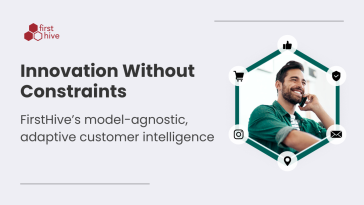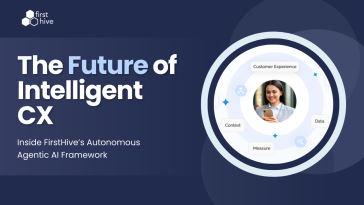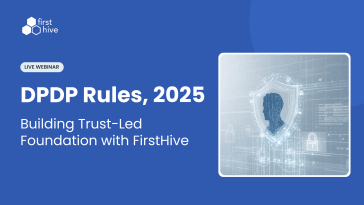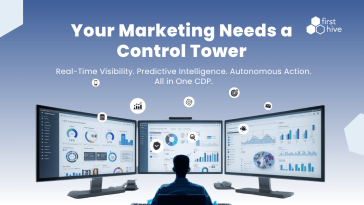In today’s data-driven world, businesses rely on customer data to understand their audience, tailor their marketing strategies, and drive growth. Among the various types of data available, first-party data stands out as a valuable asset for businesses. In this blog post, we will explore the concept of first-party data and provide several examples of how businesses can leverage it to enhance their marketing efforts.
What is First-Party Data?
First-party data refers to the information collected directly from your customers or audience. It includes data obtained through interactions on your website, mobile apps, social media channels, email newsletters, in-store purchases, surveys, and more. Unlike second-party or third-party data, which are obtained from external sources, first-party data is the most reliable and relevant to your specific business.
First-Party Data Examples
Let’s take a look at some examples of first-party data and how businesses can use them:
1. Website Visits
Tracking the behavior of website visitors can provide valuable insights into their preferences, interests, and intentions. Analyzing metrics such as page views, bounce rates, time spent on site, and click-through rates can help businesses understand which pages or products attract the most attention, identify areas for improvement, and optimize their website’s user experience.
2. Email Newsletters
Collecting email addresses and tracking email engagement allows businesses to communicate directly with their customers. By analyzing open rates, click-through rates, and conversion rates, businesses can personalize their email marketing campaigns, deliver relevant content, and nurture customer relationships.
3. Content Engagement
Monitoring how customers interact with your content, such as blog posts, videos, or social media posts, provides insights into their preferences and interests. Analyzing metrics such as likes, shares, comments, and time spent on content helps businesses understand which topics resonate with their audience and create more targeted and engaging content.
4. In-Store Purchase
For businesses with physical stores, tracking in-store purchases through loyalty programs or point-of-sale systems can provide valuable data. By understanding customers’ purchase history, preferences, and buying patterns, businesses can personalize their offers, provide tailored recommendations, and improve customer satisfaction and loyalty.
5. Surveys
Conducting surveys allows businesses to directly gather feedback and opinions from their customers. Surveys can provide insights into customer preferences, satisfaction levels, and areas for improvement. By analyzing survey responses, businesses can make data-driven decisions, refine their products or services, and enhance the overall customer experience.
Why First-Party Data Matters
First-party data offers several advantages over second-party or third-party data:
- Accuracy and Relevance: First-party data is collected directly from your audience, ensuring its accuracy and relevance to your specific business.
- Privacy Compliance: As privacy regulations become stricter, relying on first-party data allows businesses to maintain compliance and build trust with their customers.
- Unique Insights: First-party data provides unique insights into your audience’s behavior, preferences, and buying patterns, enabling you to tailor your marketing strategies and drive better results.
Conclusion
First-party data is a powerful tool for businesses to understand their audience and deliver personalized marketing experiences. By leveraging first-party data examples such as website visits, email newsletters, content engagement, in-store purchases, and surveys, businesses can enhance their marketing strategies, improve customer satisfaction, and drive growth. Remember to always handle customer data responsibly, respecting privacy regulations and building trust with your audience.
Now, let’s address some frequently asked questions (FAQs) about first-party data:
1. What is first-party data?
First-party data refers to the information collected directly from your customers or audience. It includes data obtained through interactions with your website, email campaigns, social media platforms, and offline channels like in-store purchases or surveys. This data is valuable because it provides insights into your customers’ preferences, behaviors, and interests.
2. How can businesses collect first-party data?
Businesses can collect first-party data through various channels. For example, website analytics tools can track user behavior, such as page views, time spent on site, and click-through rates. Email newsletters allow businesses to gather data on subscribers’ preferences and engagement. In-store purchases can be tracked through loyalty programs or customer accounts. Surveys and feedback forms provide direct insights from customers.
3. Why is first-party data important for marketing strategies?
First-party data allows businesses to understand their audience on a deeper level. By analyzing this data, businesses can identify patterns, preferences, and trends among their customers. This information enables them to create personalized marketing campaigns, tailor product recommendations, and deliver relevant content. Ultimately, this leads to improved customer satisfaction, increased engagement, and higher conversion rates.
4. How can businesses ensure the responsible handling of customer data?
Responsible handling of customer data is crucial for maintaining trust and complying with privacy regulations. Businesses should implement robust data protection measures, such as encryption and secure storage systems. They should also obtain explicit consent from customers before collecting their data and provide clear privacy policies. Regular audits and reviews of data handling practices can help identify and address any potential vulnerabilities.
5. What are the benefits of using first-party data?
Using first-party data offers several benefits for businesses. It allows them to understand their customers’ preferences and behaviors, enabling more targeted and effective marketing campaigns. By delivering personalized experiences, businesses can enhance customer satisfaction and loyalty. Additionally, first-party data is owned and controlled by the business, reducing reliance on third-party data sources and potential data quality issues.
In conclusion, leveraging first-party data is essential for businesses to gain valuable insights into their audience and deliver personalized marketing experiences. By collecting data through various channels and handling it responsibly, businesses can enhance their marketing strategies, improve customer satisfaction, and drive growth. Remember, always prioritize privacy regulations and build trust with your audience by being transparent about data collection and usage.








